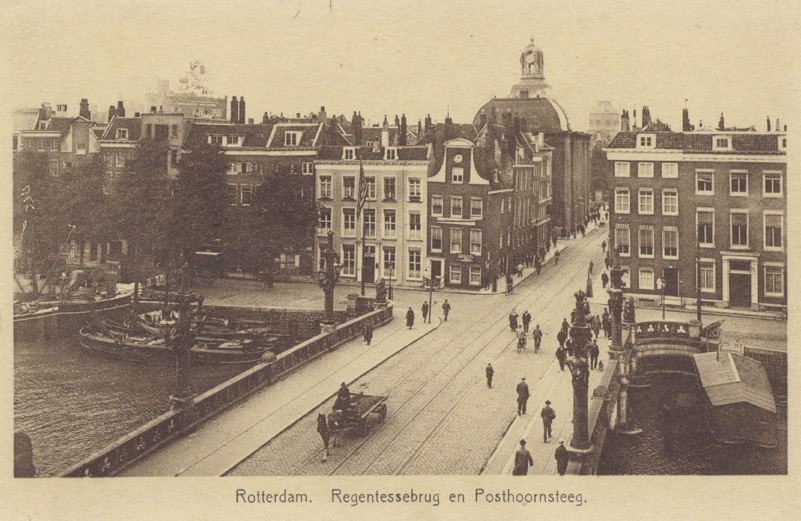American consulate in Rotterdam
Anyone who wanted to emigrate from the Netherlands to the United States during the 1930s had to apply for a visa at the US consulate in Rotterdam. The consulate in Amsterdam only issued visas for temporary stays.

Wijnhaven, Rotterdam. Het gebouw in het midden is het Amerikaanse consulaat; de Stars and Stripes-vlag hangt uit.
Fotograaf onbekend. Prentbriefkaartencollectie Stadsarchief Rotterdam Copyright: Status onduidelijk
Both the Frank family and the Van Pels family attempted to emigrate to the United States. Otto Frank had been working on his plans to emigrate to the United States since 1938. The immigration visa application, with all the necessary documents, had to be submitted to the American consulate in Rotterdam. In the Netherlands, only the Rotterdam consulate issued immigration visas. But the application procedure was cumbersome and lengthy for German emigrants, because they had to collect all kinds of information in their native country. To make matters worse, the consulate was destroyed during the bombardment of Rotterdam on 14 May 1940, whereby all papers were lost That led to a laborious reconstruction of the waiting list, and all applications had to be resubmitted, which meant that the already small chance of both families to emigrate inn time was definitively lost.[1]
After the destruction of the Rotterdam's city center, the consulate moved to a building on the Westersingel. Rising tensions between the United States and Germany forced all US consulates in occupied territory to close in early July 1941. On 10 July, the consul in Rotterdam reported to the State Department that he had destroyed the visa stamps as instructed.
Footnotes
- ^ Rebecca Erbelding & Gertjan Broek, German bombs and US bureaucrats: how escape lines from Europe were cut off, Washington, DC: United States Holocaust Memorial Museum, 2018.